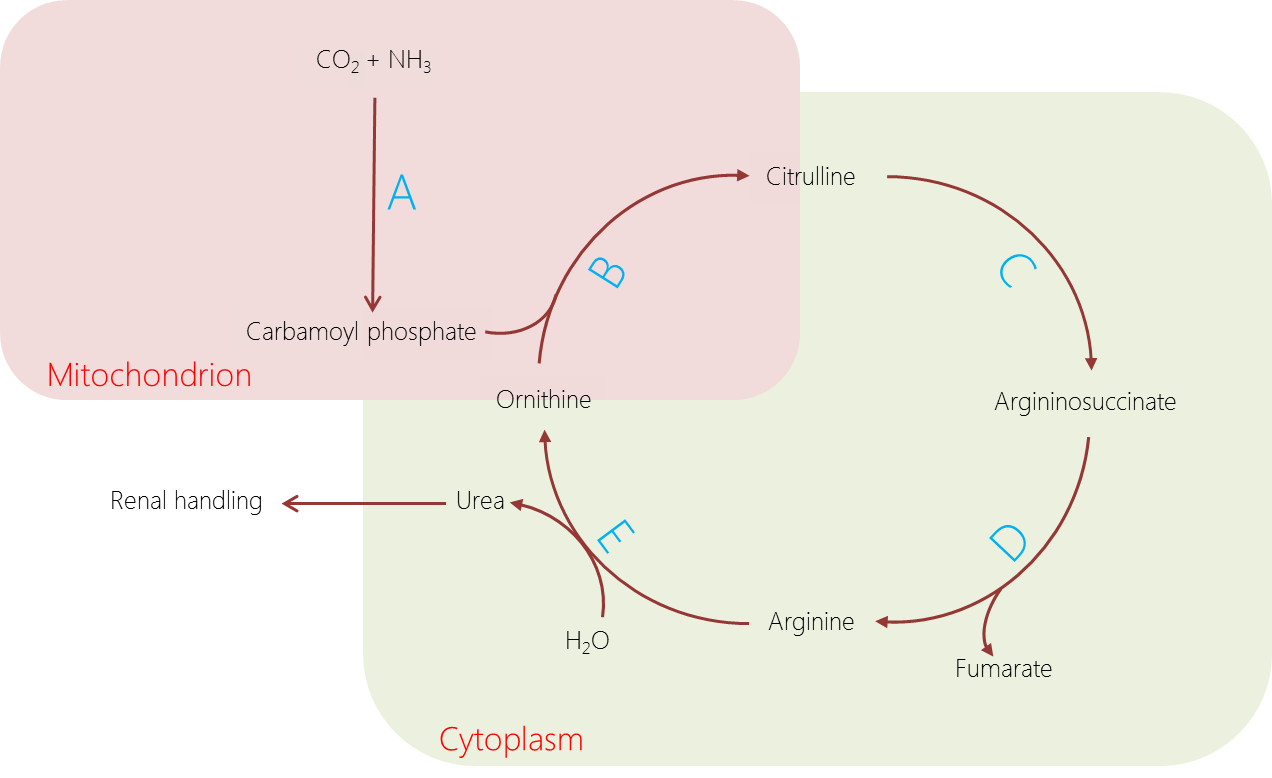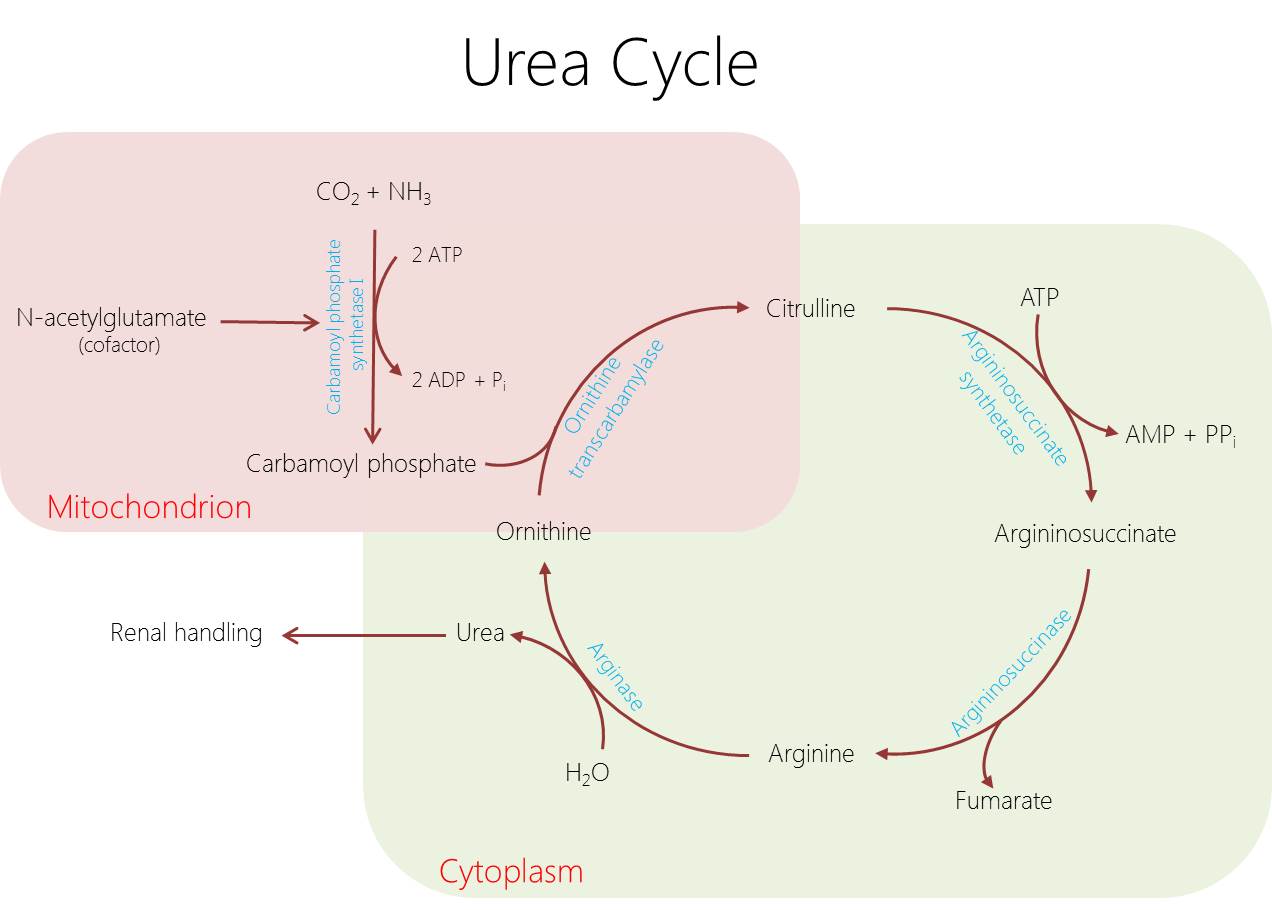WBR0972
| Author | [[PageAuthor::Rim Halaby, M.D. [1] (Reviewed by Yazan Daaboul, M.D.)]] |
|---|---|
| Exam Type | ExamType::USMLE Step 1 |
| Main Category | MainCategory::Biochemistry |
| Sub Category | SubCategory::General Principles |
| Prompt | [[Prompt::A 35-year-old woman complains that her newborn is feeding poorly. The newborn was born one day ago by an uneventful vaginal delivery. His mother received all her prenatal vitamins during pregnancy and followed up with her obstetrician regularly. On physical examination, the newborn is hypothermic and appears lethargic. Further investigation demonstrates an elevated concentration of serum ammonia and deficiency in N-acetylglutamate synthase activity. The physician explains to the newborn's mother that his condition is caused by abnormal functioning of an enzyme in the urea cycle. Which of the following reactions of the urea cycle is directly involved in this patient's condition? |
| Answer A | AnswerA::A |
| Answer A Explanation | AnswerAExp::A corresponds to the enzyme carbamoyl phosphate synthetase I, which is the rate-limitng step of the urea cycle. Carbamoyl phosphate synthetase I activation requires ATP and the cofactor N-acetylglutamate. |
| Answer B | AnswerB::B |
| Answer B Explanation | [[AnswerBExp::B corresponds to ornithine transcarbamylase, which catalyzes the reaction that produces citrulline.]] |
| Answer C | AnswerC::C |
| Answer C Explanation | AnswerCExp::C corresponds to argininosuccinate synthetase, which is an ATP-requiring enzyme that catalyzes the reaction that produces argininosuccinate. |
| Answer D | AnswerD::D |
| Answer D Explanation | AnswerDExp::D corresponds to arginosuccinase, which catalyzes the reaction that produces arginine and fumarate. |
| Answer E | AnswerE::E |
| Answer E Explanation | [[AnswerEExp::E corresponds to arginase, which catalyzes the reaction that produces ornithine.]] |
| Right Answer | RightAnswer::A |
| Explanation | [[Explanation::The urea cycle involves a set of 5 hepatic enzymes that collectively convert ammonia into urea. Two of the reactions involved in urea synthesis occur within the mitochondria, whereas the remaining reactions occur in the cytoplasm.
The rate limiting step in the urea cycle is the reaction catalyzed by the mitochondrial enzyme carbamoyl phosphate synthetase I that produces carbamoyl phosphate from carbon dioxide and ammonia. The enzyme of this rate limiting step requires ATP and the cofactor N-acetylglutamate. N-acetylglutamate synthase (NAGS) normally catalyzes the reaction that produces N-acetylglutamate from glutamate and acetyl-CoA. N-acetylglutamate synthase deficiency in this newborn results in a reduced production of N-acetylglutamate and reduced activation of carbamoyl phosphate synthetase I enzyme. Consequently, ammonia builds up to toxic concentrations, resulting in clinical manifestations of the disease (poor feeding, lethargy, hypothermia, and seizures). Shown below is an illustration of the reactions of the urea cycle, all of which occur in hepatocytes in the liver |
| Approved | Approved::Yes |
| Keyword | WBRKeyword::Urea cycle, WBRKeyword::Carbamoyl phosphate synthetase I, WBRKeyword::N-acetylglutamate, WBRKeyword::Urea synthesis, WBRKeyword::Ammonia, WBRKeyword::Rate limiting step, WBRKeyword::Reaction, WBRKeyword::Enzyme |
| Linked Question | Linked:: |
| Order in Linked Questions | LinkedOrder:: |

